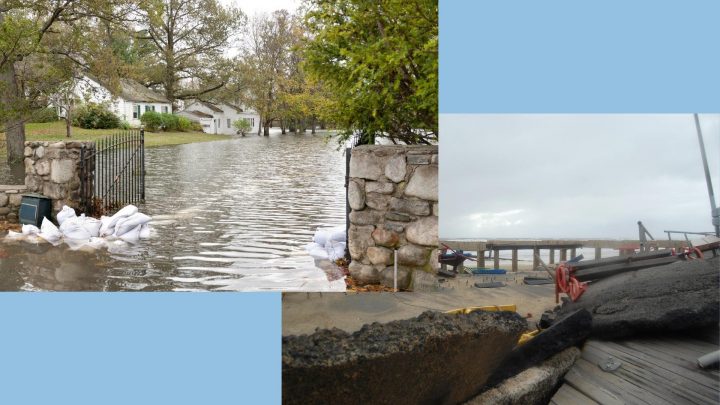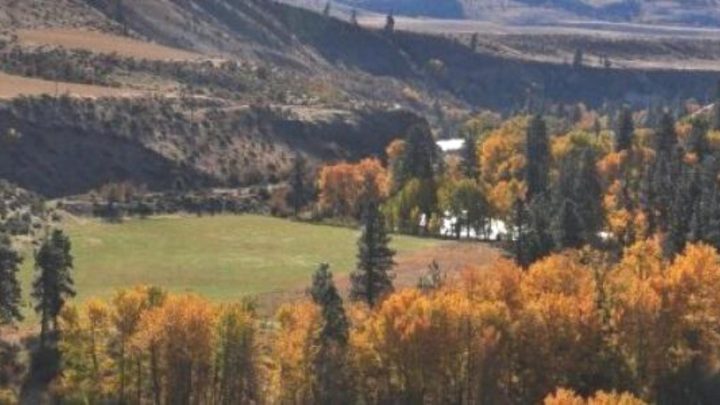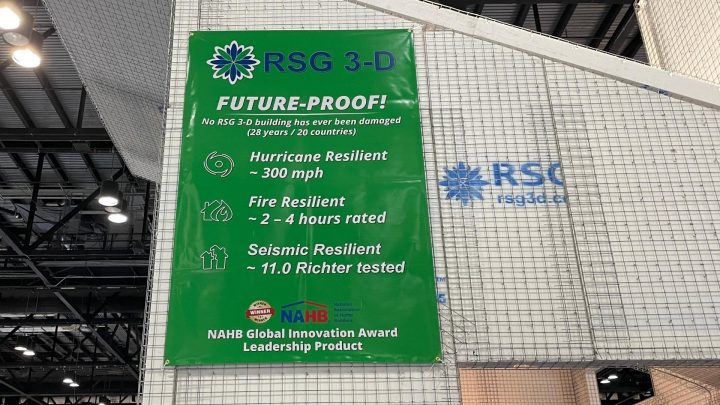When you move to Florida, you're aware they have multiple hurricanes each year … but you don't really know how they affect people living there. From New Hampshire, we were grateful my son was able to stay with his college roommates mother during not one but 2 hurricanes his freshman year at college. But wait, Hurricane Sandy moved up the east coast and devastated New Jersey and New York. Houses there weren't built to Florida codes, so they weren't prepared to withstand climate disasters like hurricanes.

As the map shows, almost every section of the US is being pummeled by severe weather events costing taxpayers, insurance companies, business and home owners billions of dollars. Don't forget, there are hundreds more events that didn't reach a billion dollars in cost. The question then is are you ready? And do you even know which problems you're mostly likely to encounter, like ice dams in the north when the snow doesn't melt?

The question homeowners should be asking is what can we do to lower the lifestyle risks of these climate disasters. There's plenty of information about global climate change and it's not my intent to reiterate this information.

Local Action to Prepare for Climate Disasters
There's little we can do to change the weather but we can prepare for known and/or projected risks to our community based on changing weather patterns. The irony here is while some parts of the US are dealing with flooding, both coastal and inland, other parts are suffering from severe droughts. The Colorado River Basin (shown above) provides water resources to 40 million people. Not only do we need to recognize how we waste water today with crazy things like irrigated lawns, we also have to looks for ways to make our homes less vulnerable due to wildfires caused in part by drought.
Here are just a few examples from the US Climate Resilience Toolkit, of local communities preparing for weather and climate disasters. We all need to make time to understand how we are vulnerable and what we can do to support these projects, as they aren't free.

- Houston, Texas – After Record-Breaking Rains, a Major Medical Center's Hazard Mitigation Plan Improves Resilience.
- New Orleans, Louisiana – After Katrina, Health Care Facility's Infrastructure Planned to Withstand Future Flooding.
- New Hampshire – water managers are Addressing Water Supply Risks from Flooding and Drought.
- Fredericktown, Missouri – with city's main source of water dwindling, water managers used the EPAs Creating Resilient Water Utilities program to develop plans Addressing Short- and Long-Term Risks to Water Supply.
- Homer, Alaska – is A Town with a Plan: Community, Climate, and Conversations.
- Florida – with it's humid climate, they created an Alert System to Help Strawberry Growers Reduce Costs.

- Washington’s Yakima River Basin – developed An Integrated Plan for Water and Long-Term Ecological Resilience.
- Pender County, North Carolina – Analyzing Future Urban Growth and Flood Risk in North Carolina.
- Northern Wisconsin – tribal foresters are speeding up regeneration of forest areas that have been treated for invasive diseases, so The Trees Will Last Forever.
- Puerto Rico – Aquifer Storage and Recovery: A Strategy for Long-Term Water Security in Puerto Rico.

Climate Emergencies Homeowners Can Prepare For
There are many things a homeowner can do to make their home more resistant to extreme weather events. All of them are viable when buying/building a house while fewer options work for existing homes. That's why I've organized these recommendations so you can see which risk resilient options you can (should) explore using for your home.
While you can and should prepare for all types of extreme weather challenges, some disasters like tornados, must focus on family safety rather than the house. The weather challenges you can reduce risk for include:

- Water damage from hurricanes or extreme rainfall causing the ocean, rivers and/or lakes to overflow their banks.
- Water damage from extreme cold that causes water pipes to burst, as happened in Texas (read: Texas cold snap was not ‘unprecedented,’ and it was inexcusable to be unprepared).
- Damage from ice dams (shown above) can wreak havoc with not only your roof, but everything underneath it (framing, insulation, etc.) once it gets wet.

- Hail storms can also do significant damage to roofs, windows and exterior fixtures like air conditioning units, trees and other landscaping. Cars that aren't protected are also vulnerable to hail damage.
- Fire damage due to lightning strikes, local fires and wildfires like the Marshall fire near Boulder, Colorado. Sometimes the heat is so intense that nothing can survive but often some houses survive and wouldn't you like your home to be among those.
- Wind from severe storms can damage your home's exterior, from the roof to siding, windows and doors … most often from falling tree braches.
- Climate change can cause drought conditions that can seriously affect landscaping around your home.

So here are the biggest exterior home features affected by climate disasters …
| House Component | Fire | Water | Wind | When |
| House Framing | X | X | X | When building a new house or remodeling, consider ways to reduce risks from climate events. New materials are entering the market to help you … like the RSG 3-D technology shown above. |
| Roofing & Underlayment | X | Replacing a roof – fire rated (Class A) materials include asphalt shingles, recycled rubber tile, metal tile, clay tile and slate | ||
| Siding | X | X | Replacing house siding – evaluate fiber cement, stone veneer, naturally fire-resistant brick or stucco | |
| Windows & Doors | X | X | Replacing windows – dual-pane windows are more fire-resistant and building codes differ for for windows and doors in hurricane areas … and there's always room to upgrade. | |
| Landscaping | X | Landscaping should reflect your area's weather. Native plants will need less water and trees should be trimmed to remove branches that overhang the house, as well as those dead or dying. |

Here are some amazing resources I found that you can review if you're planning to build a house or replace any of the features listed in the table above:
- DisasterSafety.org – found when I wanted to learn more about wind related damage but they cover so much more – floods, hail, hurricanes, tornados, wildfires plus severe wind, rain, etc.
- CompuWeather.com – is another website I found to learn more about wind damage to houses. What's scary is there are different types of wind damage and “When it comes to insurance claims, the type of wind responsible for damage can be critical for how a claim is evaluated and processed.”
- FireSafeMarin.org (Marin, CA) – is an amazing website found when looking for window information, i.e. more than building codes. It's meant to help homeowners prepare for wildfires and covers more topics than I've included in the table above, all important for homeowners who want to prepare for most home emergencies.
What was exciting for me was learning this new phrase, one we'll be reading a lot more about as climate disasters affect our lives, our homes and how we live.
Hardening Your Home
Hardening your home against wildfire damage involves taking steps to improve the chance that your home and surrounding structures can withstand ignition by a wildfire, firebrands and other events we face as homeowners.





Leave a Reply